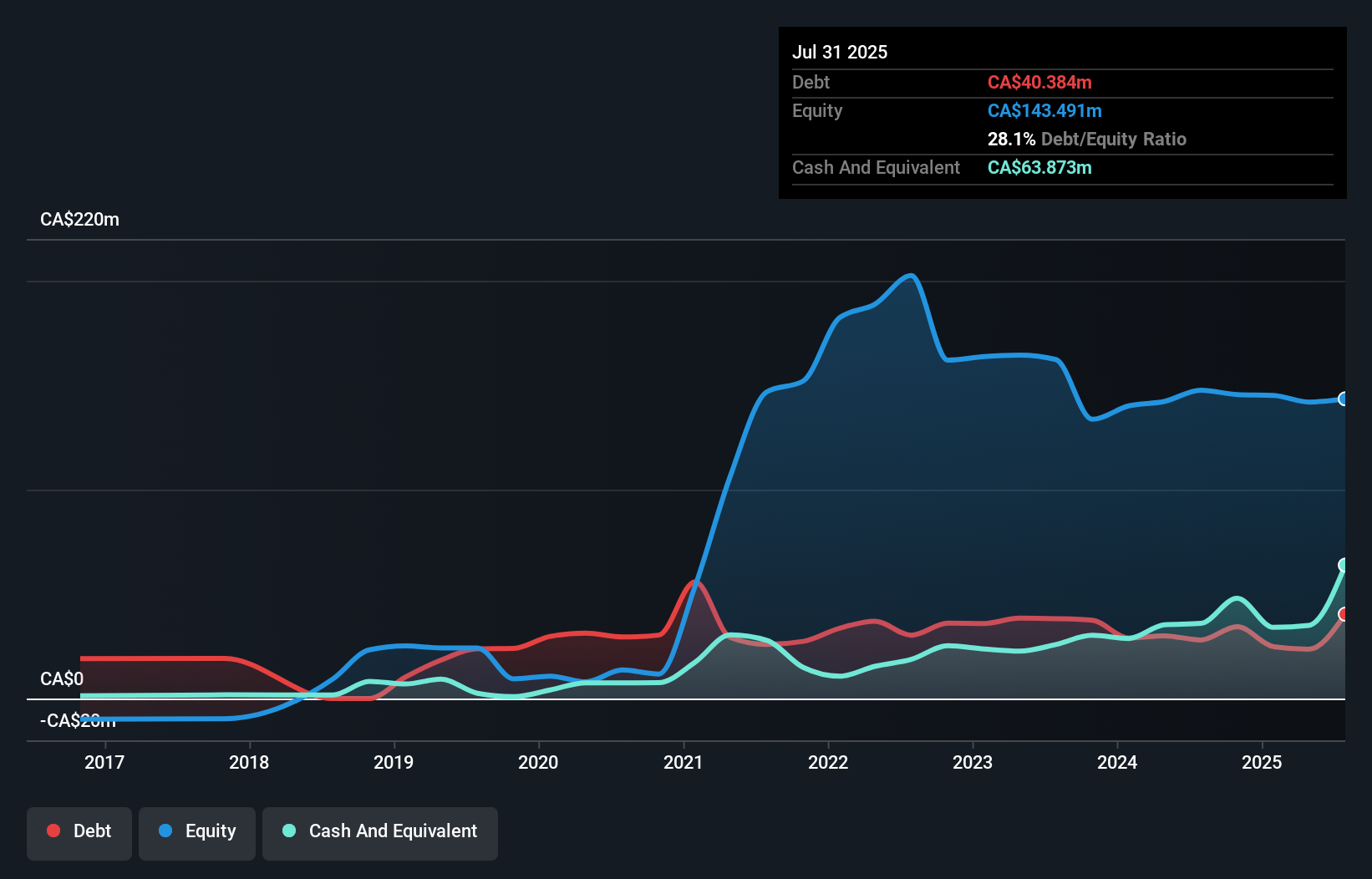Here's Why High Tide (CVE:HITI) Can Manage Its Debt Responsibly
David Iben put it well when he said, 'Volatility is not a risk we care about. What we care about is avoiding the permanent loss of capital.' It's only natural to consider a company's balance sheet when you examine how risky it is, since debt is often involved when a business collapses. We can see that High Tide Inc. (CVE:HITI) does use debt in its business. But the real question is whether this debt is making the company risky.
Why Does Debt Bring Risk?
Debt is a tool to help businesses grow, but if a business is incapable of paying off its lenders, then it exists at their mercy. Part and parcel of capitalism is the process of 'creative destruction' where failed businesses are mercilessly liquidated by their bankers. However, a more frequent (but still costly) occurrence is where a company must issue shares at bargain-basement prices, permanently diluting shareholders, just to shore up its balance sheet. By replacing dilution, though, debt can be an extremely good tool for businesses that need capital to invest in growth at high rates of return. The first thing to do when considering how much debt a business uses is to look at its cash and debt together.
What Is High Tide's Debt?
The image below, which you can click on for greater detail, shows that at July 2025 High Tide had debt of CA$40.4m, up from CA$28.0m in one year. But on the other hand it also has CA$63.9m in cash, leading to a CA$23.5m net cash position.

How Healthy Is High Tide's Balance Sheet?
According to the last reported balance sheet, High Tide had liabilities of CA$56.1m due within 12 months, and liabilities of CA$60.8m due beyond 12 months. On the other hand, it had cash of CA$63.9m and CA$3.55m worth of receivables due within a year. So its liabilities outweigh the sum of its cash and (near-term) receivables by CA$49.5m.
Since publicly traded High Tide shares are worth a total of CA$404.2m, it seems unlikely that this level of liabilities would be a major threat. Having said that, it's clear that we should continue to monitor its balance sheet, lest it change for the worse. While it does have liabilities worth noting, High Tide also has more cash than debt, so we're pretty confident it can manage its debt safely.
Check out our latest analysis for High Tide
High Tide grew its EBIT by 3.0% in the last year. That's far from incredible but it is a good thing, when it comes to paying off debt. There's no doubt that we learn most about debt from the balance sheet. But it is future earnings, more than anything, that will determine High Tide's ability to maintain a healthy balance sheet going forward. So if you're focused on the future you can check out this free report showing analyst profit forecasts.
But our final consideration is also important, because a company cannot pay debt with paper profits; it needs cold hard cash. While High Tide has net cash on its balance sheet, it's still worth taking a look at its ability to convert earnings before interest and tax (EBIT) to free cash flow, to help us understand how quickly it is building (or eroding) that cash balance. Happily for any shareholders, High Tide actually produced more free cash flow than EBIT over the last two years. That sort of strong cash generation warms our hearts like a puppy in a bumblebee suit.
Summing Up
Although High Tide's balance sheet isn't particularly strong, due to the total liabilities, it is clearly positive to see that it has net cash of CA$23.5m. The cherry on top was that in converted 180% of that EBIT to free cash flow, bringing in CA$20m. So we don't have any problem with High Tide's use of debt. Of course, we wouldn't say no to the extra confidence that we'd gain if we knew that High Tide insiders have been buying shares: if you're on the same wavelength, you can find out if insiders are buying by clicking this link.
When all is said and done, sometimes its easier to focus on companies that don't even need debt. Readers can access a list of growth stocks with zero net debt 100% free, right now.
Valuation is complex, but we're here to simplify it.
Discover if High Tide might be undervalued or overvalued with our detailed analysis, featuring fair value estimates, potential risks, dividends, insider trades, and its financial condition.
Access Free AnalysisHave feedback on this article? Concerned about the content? Get in touch with us directly. Alternatively, email editorial-team (at) simplywallst.com.
This article by Simply Wall St is general in nature. We provide commentary based on historical data and analyst forecasts only using an unbiased methodology and our articles are not intended to be financial advice. It does not constitute a recommendation to buy or sell any stock, and does not take account of your objectives, or your financial situation. We aim to bring you long-term focused analysis driven by fundamental data. Note that our analysis may not factor in the latest price-sensitive company announcements or qualitative material. Simply Wall St has no position in any stocks mentioned.
About TSXV:HITI
Flawless balance sheet and good value.
Similar Companies
Market Insights
Community Narratives



